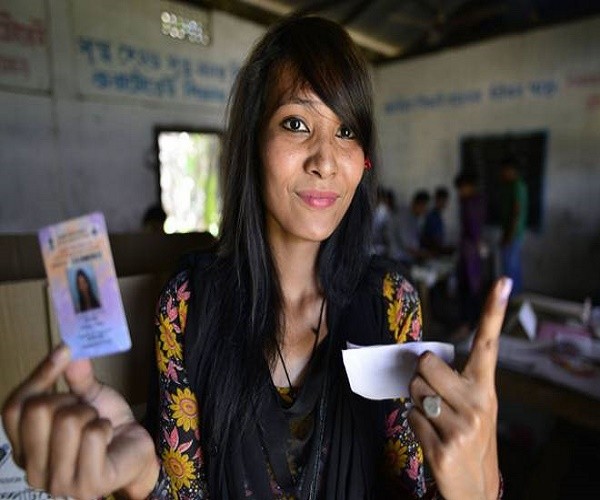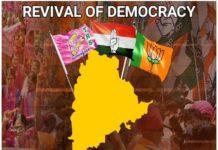The only thing predictable about Indian elections is that they are unpredictable. The assembly elections in Tripura and the Lok Sabha by-poll in Gorakhpur showed, yet again, the political nimbleness of the electorate.
If an old red state fell in the Northeast, a veritable saffron citadel crumbled in Yogi Adityanath’s constituency. There are buzzwords that try to peg this flux, capture the changing mood of voters: anti-incumbency, polarisation, caste equations, hypernationalism. Adding one more level of uncertainty is the young electorate, the 18-19-year-olds who often come to the polling booth with little political baggage but could become steadfast loyalists of a particular party.
If you extrapolate the 2011 Census data, about 2 crore youngsters turn 18 every year. When the 2019 elections come around, there could be, hypothetically, 10 crore firsttime voters. Not every one gets registered with the Election Commission of India (ECI), but that is a cohort that no political party can afford to ignore.
It is not just their number that is significant but also their characteristics. First-time voters behave differently. They are often better informed, more educated and tech-savvy than the rest of their family, and they can take a stand that goes against the family’s established political leanings. They can also have an impact on elections by acting as opinion-makers and influencers in their circle of family and friends.
For political parties, the concern and, sometimes, the opportunity lie in the fact that the number of first-time voters in India is humungous. According to ECI data, about 2.6 crore young people in the age bracket of 18 to 20 years have already been registered in the electoral rolls. The number is 1.38 crore for the 18-19 age bracket, according to ECI data, as on February 10.
In the recently held Lok Sabha by-polls — in Gorakhpur and Phulpur in Uttar Pradesh and Araria in Bihar — there’s no source to clearly understand how many youngsters cast their first vote and if they have had any impact on results. But according to the data on Araria which ET Magazine has previewed, the projected census population, as of January 2018, in the district in the age bracket of 18-19 years is about 70,000. The number of people between 20 and 29 years of age, some of whom could be first-time voters in 2019, is 5.8 lakh.
With the Telugu Desam Party leaving the BJP-led National Democratic Alliance (NDA) on Friday, the preparation for the 2019 battle will only intensify.
It also means targeting the crucial first-time electorate. ET Magazine spoke to political leaders, poll strategists, spin-meisters and first-time voters to understand how the narrative of wooing the youth has changed from 2013-14. When candidate Narendra Modi was campaigning, he relied mostly on a combination of Facebook-driven social media interventions and engagement of student volunteers to spearhead his popular Chai Pe Charcha events.
By the end of 2015 — when the JD(U), RJD and the Congress in a Mahagathbandhan (grand alliance) upset the BJP in the Bihar assembly poll — and in the run-up to the 2017 Uttar Pradesh and Punjab assembly polls, it was WhatsApp, not Facebook, which became the main channel for wooing first-time voters.
With the big battle of 2019 approaching, political parties are on an overdrive to engage with the young electorate. The BJP, for example, has been organising booth-level events for nav matdata (new voters) to convert them into life members.
The party will continue to project PM Modi as the mascot among the youth. In the run-up to the 2014 Lok Sabha poll and even later, Modi has been more popular among the youth than Congress’ Rahul Gandhi. Young voters clearly were not looking for someone closer their age but to a leader who inspires and speaks the language of aspiration.
And also the lingo of social media. Modi was the first Indian politician to mainstream social media to come closer to the younger generation, something Gandhi is only catching up now.
Jyotiraditya Scindia, Congress’ chief whip in the Lok Sabha, acknowledges that his party has been late in adopting social media tools but adds that it has upped its social media outreach manifold in the last one year.
“Our party president and all top leaders are now very active in all social media platforms. In the recent Madhya Pradesh by-poll (where the party won), we deployed all channels — Facebook, Twitter, Instagram and WhatsApp — to reach out to voters, mainly the younger ones,” he says.
Union Minister of Minority Affairs and senior BJP leader Mukhtar Abbas Naqvi says new voters have no baggage and may drift to any direction. “Young Muslims, for example, are getting attracted to the BJP as we are providing development and dignity to all. Young voters have no baggage, and Partition phobia is long over,” he says.
The big question, though, is which political party or alliance will succeed in creating the right narrative ahead of the 2019 parliamentary polls to attract the younger electorate. With the spread of 4G connectivity to rural India and cheaper smartphones, the 2019 battle is likely to be fought as much on phones as in the streets. Maybe, the younger lot will find phones more handy. #KhabarLive







